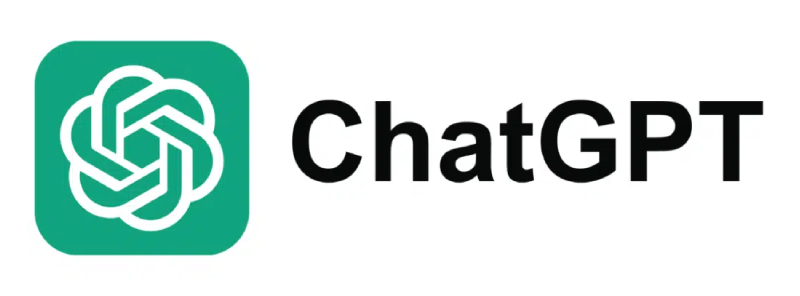Key takeaways
- Exclusive licenses grant sole rights; non-exclusive licenses allow shared usage
- Use exclusive for control; non-exclusive for flexibility and reach
- Exclusive licenses ensures dominance; non-exclusive fosters broader revenue streams
- Exclusive suits patents; non-exclusive works for software and creative IP
- Docupilot saves time, ensures accuracy, and streamlines licensing
Licensing agreements can be tricky. Pick the wrong type, and you might either lock yourself into a deal that limits growth or leave your intellectual property open to overuse. The challenge is deciding what works best for your goals: exclusivity for control or flexibility for reach? It’s not always obvious.
In this article, you’ll get a straightforward breakdown of exclusive vs non-exclusive license, the factors you need to weigh before making a decision, and how automation can simplify the process.
By the end, you’ll have a clear plan for creating smarter, faster agreements.
What is an exclusive license?
An exclusive license gives you, the licensee, sole rights to use, produce, and distribute specific intellectual property (IP), such as a patent, trademark, or creative work.
With this agreement, the licensor (the original owner) agrees not to grant the same rights to anyone else, meaning you’re free from direct competition over the licensed IP.
Example of an exclusive license
Rights and privileges granted
With an exclusive license, you gain significant control over the IP. Depending on the terms, you may acquire rights to manufacture products, sell in specific markets, or even sublicense the IP to others. This exclusivity ensures that no one else, including the licensor, can interfere with your ability to maximize the IP’s value. For you, it’s a unique opportunity to grow without competition within the agreed scope.
Key considerations for an exclusive license
While an exclusive license might sound ideal, it comes with some responsibilities. You’ll need to ensure the scope of the agreement is clear—what regions, industries, or applications does it cover? Does the licensor have any restrictions, or could they still use the IP in ways that could indirectly affect you?
It’s also important to consider whether you’ll be required to meet certain performance goals, like sales milestones or development timelines, to keep your exclusivity intact. And don’t overlook the termination terms; you want to avoid surprises if the agreement ends prematurely.
A clear example is the case of Mevon v. Ward Equipment Limited. In this dispute, Mevon attempted to terminate its exclusive license with Ward Equipment, citing alleged breaches. However, because the agreement lacked a provision for termination without cause, Mevon's actions were contested in court.
The absence of explicit termination clauses can lead to legal uncertainty, prolonged disputes, and disruptions in business operations. So, do NOT forget them!
Now once you’ve thought through the key considerations for your exclusive license, the next step is creating an agreement that captures all these details. Drafting a comprehensive and enforceable licensing agreement is no easy feat, especially when you’re juggling complex terms like performance goals and termination clauses. That’s where having the right tools becomes invaluable.
How document automation makes licensing agreements easier
Creating documents, especially licensing agreements, can be a lot of work, but document automation can take much of the stress out of the process. Automated templates let you create tailored agreements with all necessary details quickly and accurately. This reduces errors and allows you to focus on leveraging the license for success, not managing legal paperwork.
What is a non-exclusive license?
A non-exclusive license allows multiple parties to use the same intellectual property (IP) simultaneously. Unlike an exclusive license, this agreement does not grant sole rights to the licensee. Instead, the licensor retains the ability to license the IP to others or even use it themselves.
This flexibility makes non-exclusive licenses a common choice for software, creative works, and other IPs that can be widely distributed or shared.
Example of a non-exclusive license
Key considerations for choosing a non-exclusive license
Non-exclusive licenses are ideal when the goal is to maximize the reach and profitability of an IP. However, as a licensee, you’ll need to evaluate whether shared access aligns with your business objectives.
For instance, competing licensees might dilute your market share or limit your pricing power. This can be better explained by the legal battle revolving around Google's use of Java in its Android operating system.
Oracle claimed that Google's use of its Java APIs without a proper licensing agreement diluted Oracle's market share in the software industry and affected its pricing power for Java licenses. But the court ruled in favor of Google, nonetheless because JAVA is free and open-source.
So, when defining the license's scope, be clear and include usage rights, geographic limits, and duration, while ensuring alignment with your goals.
For licensors, granting non-exclusive licenses can generate multiple revenue streams. However, they must ensure proper contract management to avoid overlapping agreements or misuse of the IP.
With these considerations in place, it’s now time to create a non-exclusive license. Drafting it perfectly will keep you up for nights. That’s why you need a tool that can make it easier for you.
Simplifying non-exclusive licensing with document automation
Document automation simplifies the creation and management of non-exclusive licenses. Using templates, you can quickly draft agreements tailored to each licensee, ensuring clarity and consistency across multiple contracts. Automation reduces errors, accelerates workflows, and ensures that every agreement reflects the specific terms needed to protect the IP and foster successful partnerships.
Difference between exclusive and non-exclusive licenses
Factors to consider while choosing exclusive vs non-exclusive licenses
When deciding between an exclusive vs non-exclusive license, you need to weigh several factors to ensure your choice aligns with your business objectives, market needs, and the nature of the IP.
How to choose between exclusive and non-exclusive licenses
- Understand your revenue goals: If your business thrives on high-value, long-term partnerships, exclusivity might be the way to go. On the other hand, if you’re looking to diversify income streams and encourage widespread adoption, non-exclusive licenses are more effective.
- Assess the nature of the IP: Consider whether your IP benefits more from controlled, focused use or widespread availability. Patents, for instance, often benefit from exclusivity, while software typically thrives with broader licensing.
- Think about market dynamics: In highly competitive markets, exclusive licenses can create a differentiator, whereas non-exclusive licenses may foster ecosystem growth.
- Consider legal and operational scalability: Exclusive licenses may limit your flexibility to pivot or expand. Non-exclusive licenses provide more freedom to explore multiple opportunities simultaneously.
Why you need to automate license creation process
If you’ve ever worked on a licensing agreement, you know how detailed and time-consuming the process can be. Whether it’s an exclusive or non-exclusive license, there are so many moving parts: defining the scope, negotiating rights, setting obligations, and ensuring contract compliance. It’s a lot to manage, and one mistake could lead to costly disputes down the line. That’s why automating the process isn’t just a luxury—it’s a necessity.
Here’s how you can quickly create licensing agreements with Docupilot:
- Choose or customize a template
Start with pre-built templates tailored for exclusive or non-exclusive licenses. You can easily adjust clauses like geographic scope, sublicensing rights, or performance obligations to fit your needs.
- Integrate conditional logic
You can use conditional statements to show or hide contents based on your data. For instance, you may hide sections/lines that do not have a value. - Ensure compliance
Especially in industries like finance, compliance is key. Docupilot helps you meet regulatory requirements while automating financial documents efficiently.
With automated templates, you save time, reduce errors, and focus on what matters—building strong partnerships.
Use Docupilot to Bulk Create Licensing Agreements
Exclusive licenses offer control, market dominance, and high-value partnerships, making them ideal for patents and strategic alliances. In contrast, non-exclusive licenses provide flexibility, scalability, and broader revenue opportunities, often thriving in software and creative industries.
The key is to align your licensing choice with your business objectives, the nature of your IP, and the competitive landscape.
- Choose exclusivity for focused, high-value returns; opt for non-exclusive licenses to generate diversified income streams
- Use exclusivity to eliminate competition, or embrace non-exclusivity to encourage ecosystem growth and adoption
- Address critical aspects like scope, termination terms, and performance obligations to avoid costly disputes
Once you’ve determined the right approach, the next challenge is drafting agreements that capture all these nuances. That’s where Docupilot can really help you.
With Docupilot, you can simplify the drafting process, tailor agreements to your needs, and ensure accuracy every time.
Create smarter, faster licensing agreements. Try Docupilot today and see the difference automation can make!



















